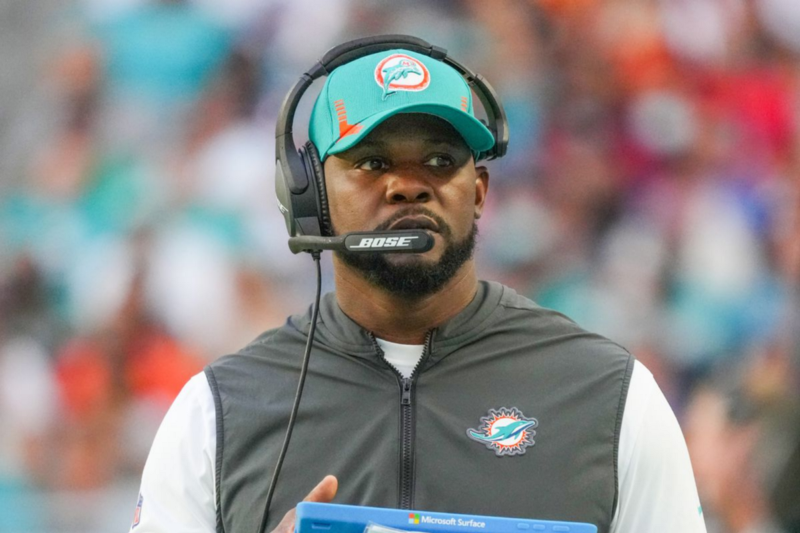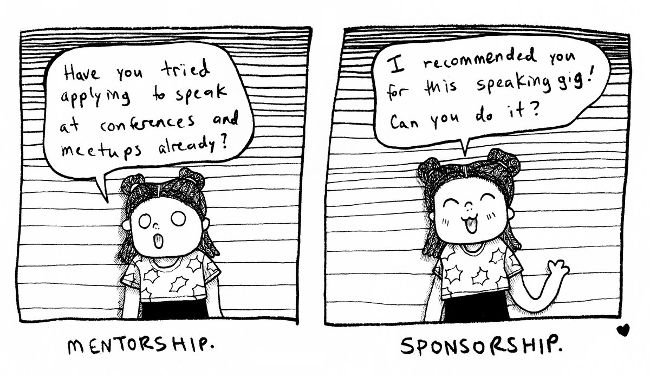Career Advancement Happens at Every Level — Including in the NFL
Last week, while millions of people were watching the drama unfold on the field, judging the commercials, or tuning in for the halftime…

Last week, while millions of people were watching the drama unfold on the field, judging the commercials, or tuning in for the halftime show, a lot of football fans like myself couldn’t help but think about what was missing on the sidelines — the continued lack of diversity among the management of NFL teams.
In the most popular entertainment venue in America, it’s especially glaring that even though 70% of the players are black, there is only a single Black head coach. And over decades of criticism, advocacy, and implementation of league-wide recruiting policies such as the Rooney Rule, these numbers have barely budged.
This year it came to a new precipice when, two weeks prior to the Super Bowl, former coach Brian Flores sued several teams and the league for discrimination in hiring against black coaches.
From my previous experience as CTO of a diversity recruiting platform, I learned that starting diversity efforts at the hiring stage is oftentimes too late. While there are a variety of hiring best practices and internal rituals you can apply within the walls of the organization, the real work happens outside of the organization. In reality, and especially in an industry that deeply values referrals like tech, the individuals and communities you interact with regularly are the folks you’re most likely to hire and promote.
Whether comprised of former colleagues, classmates, or friends of friends, the candidate pipeline often reflects the communities where you contribute your time. Those “random” coffee chats, Zoom calls, and group chats are the very source of future direct reports, colleagues, and co-workers. And even when you don’t hire from your network, the spaces where you spend most of your time leave a blueprint that is applied, consciously or not, for who you prefer to hire, highlight, and eventually advance within the organization.
So how do we fix this? How can we do a better job of diversifying the tech workforce and leadership? My recommendation is simple: mentor more junior folks in the industry, from diverse backgrounds, and sponsor their success where you can.
And I’m saying that you, individually, can make a difference here. Within your company, leadership and HR partners oftentimes look towards employees to suggest as organizations to partner and collaborate with. If no one suggests organizations to them, then it won’t magically happen tomorrow. Consider connecting with and partnering with organizations such as /dev/color, Techqueria, Out in Tech, Women Who Code, and Women In Product. If you help build those bridges, it could help your organization get in front of pools of folks they have not been in front of before.
An even faster way to make a dent is to spend a small amount of time per month mentoring and sponsoring others. Mentoring is helping other people talk through issues they’re experiencing, providing your context and relevant experience to guide them, and pointing them to potentially useful resources. Sponsorship is advocating for someone when a new opportunity comes up.

Furthermore, the research shows that mentorship and sponsorship are by far the most effective thing you can do to advance diverse talent in the workforce. For example, junior black employees with mentors are 60% more likely to be promoted within their organization. Black managers with sponsors are 65% more likely to be promoted to leaders than without. But only 5% of black employees have sponsors at work.
After facilitating thousands of hours of mentorship sessions through Merit, I can say first-hand that even an hour or two of mentorship time per month can change many people’s career trajectories for the better. And I’ve seen that anyone in the industry can help those a step or two earlier in their careers. It’s all about contributing when and where you can.
In the best case, you’ll find new people who you can hire and promote across your team — while getting recognition for doing so. Worst case you’ll meet a few people, learn a bit about the world, and help in a small way.
If you don’t know where to start, my co-founder Kirk wrote up a guide on how to become a mentor. And if you’re looking for people to mentor, consider signing up as a mentor on Merit, where we create a profile for you that does the heavy lifting.
Meanwhile, when you sponsor others, you ensure they have a shot at opportunities they may miss otherwise. Ways you can sponsor within your organization include advocating for someone to ensure they get a promotion, crediting them for their ideas and contributions, or highlighting their name for very visible and important projects.
Outside of your company, you can refer people to open roles at your current organization, refer them to friends who are hiring at other organizations, or even just suggest them as speakers to upcoming events or talks.
Mentoring and sponsoring strengthens both. By mentoring, you meet new people and gain familiarity with a range of experiences and perspectives. By sponsoring people, you can see their career trajectory in real-time with every new opportunity put in front of them. I can say firsthand that when you give ambitious people a chance, this cycle happens very quickly.
This small individual action — mentoring and sponsoring — can easily turn into new job offers, promotions, and raises that turn into future tech talent and leadership. And that call comes about by making a few small actions that you can take today.
